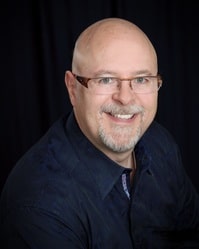The State of Healthcare Marketing Research: Reaching and Winning New Patients
[Healthcare Success Industry Leadership Podcast] In this installment of our continuing educational series, Healthcare Success CEO Stewart Gandolf talks with Rob Klein, founder and CEO of healthcare marketing research firm Klein & Partners.
 From large hospitals and medical group to individual practices, the marketing research step is a vital foundation to achieving campaign success and business growth. The process of effective research has changed, and new technology provides executives with new tools. In this look at the state of the art, Stewart and Rob discuss:
From large hospitals and medical group to individual practices, the marketing research step is a vital foundation to achieving campaign success and business growth. The process of effective research has changed, and new technology provides executives with new tools. In this look at the state of the art, Stewart and Rob discuss:
- Changes in telephone interviewing
- The downside of "cell phone sampling”
- Landline stability vs. phone number portability
- Do-not-call registry and lower cooperation rates
- There are no free respondents any more
- New technology enables new tools
- Creating patient advisory and community insights groups
Hello. Stewart Gandolf here and it is time for another podcast…again with our friend Rob Klein. Today we’re going to talk about The State of Healthcare Marketing Research. I find this to be a fascinating topic because I recall as an undergrad…taking marketing research classes…getting an idea of the state of the art then…and watching this evolve over the years.
Often, our clients want to go straight into marketing, but we always want to do as much research as possible. Our guest today, Rob Klein, is the preeminent marketing research person in healthcare. So this is our opportunity to talk with Rob today about what has happened in market research over the past few decades as well as where things are headed today.
Rob Klein: Thanks, Stewart, and thanks for having me on your podcast again. I’ve been in market research for 34 years, and I have seen significant changes. Some are good, and some concern me over the past three decades. Let me frame a few of the issues that keep me awake at night.
Probably the biggest change that I’m seeing is in telephone interviewing. When I first started in the 80’s, telephone interviewing was the gold standard. That’s what everyone did, and of course, online interviewing didn’t exist yet. Today, telephone interviewing is no longer the standard.
One of the challenges, among many, with telephone interviewing, is that much of the country is “cell phone.” If we do a landline sample, we’re missing half of the population—which tends to be younger. So, our telephone surveys are trending older and older. In many ways, it’s almost like a senior citizen survey sample. So your landline sample will not provide a balanced survey.
Then comes “cell phone sampling,” which we initially thought to be the “the fix.” That did not provide the solution we anticipated. First, you have number portability. That isn’t an issue for national brand research. But in healthcare, we want the sample to be in a particular local area.
The other challenge with cell phone sample is that they don’t have to be at home. With a landline sample, you have to be at home. But with a cell phone number, you could be out shopping—or somewhere that you don’t want to take a survey. So cooperation rate is very low with cell phone samples.
The other thing is that people with cell phones want to be paid for their cost of the call, especially if they don’t have an unlimited plan. Cell phone sample did not become the useful option that we thought it would be. Often, the cooperation rate is low with a cell phone sample because people will often refuse to participate or they will not answer the call if they don’t recognize the caller number.
Often, we are being electronically thwarted and we don’t get to a human. The cooperation rate is so bad that I have converted every client that I can to online surveys.
Stewart Gandolf: These days, it seems that people don’t want to cooperate. They know that their time is valuable or that there is a commercial side. Has the national “do not call” registry been an issue for you?
Rob: The answer is yes and no. It is definitely impacting us because people will mention it. But they don’t realize that law is very clear in that market research is exempt from the do-not-call. It is for telemarketers. And even if you tell them that, they don’t care and don’t want to be called. The reason that research is exempt is that politicians love their surveys.
Stewart: The telephone survey, which had been the gold standard, has now changed. As we look at current clients that we are working on together, let’s look at new technologies that have emerged. It turns out that there are some clear best practices for marketing research. Let’s talk about what’s happening today. Right now, what is the state of the art?
Rob: It is several things: It is not only methodological, it is also structural and departmental. Online surveys have become the state of the art. For one thing, there is no free respondent anymore. They want to be paid to participate. And that has increased cost dramatically. That has hit clients right in the budget.
Stewart: What about “mall research” and people with clipboards. Are those days gone?
Rob: In healthcare, it’s not very practical and not used. But in other industries, there is an opportunity for mall research. What’s more, there is so much technology now that we don’t need “feet on the street” research. We can do interviews online. We can do focus groups online where I can see everyone’s face even though they are in different parts of the country through the technology of webcams.
Stewart: There are lots of options available with technology. Our listeners and readers include a broad mix. There are small practices, large group practices and very large hospitals and hospital systems. Give our audience some of the categories and options for research.
Rob: There are a couple new things that are important. One shift that I’m seeing departmentally is that clients are bringing more research in-house and internal to the organization. They are starting an “insights department.” That’s something that I definitely support.
This allows clients to be more nimble and quick in data collection and data interpretation. We don’t want to wait four to six weeks for a market study when there is technology that can get answers almost overnight.
These things are fairly new and game-changers. They don’t replace doing a large, strategic study, but they allow for quick tactical questions to be answered. These are having patient advisory groups to provide an insights perspective.
A patient advisory group, based on a common issue or department, can provide ongoing and quick feedback about care for patients that have something in common. They are easy to setup and maintain.
Stewart: Tell us about other uses for research. In terms of your engagement, is it for branding, out-testing or other research purposes?
Rob: One recommendation, in addition to the patient advisory group, is forming a community insights group. In this, you may be recruiting a quantitative panel of 1,000 or 2,000 patients or people from the community. This is managed internally and gains prompt feedback on survey questions or issues. It’s not a replacement for larger studies, but it allows you to be more agile and more valuable to the organization. New technologies provide greater speed in finding answers.
Stewart: You mentioned earlier about the future of marketing research. What concerns you, and what excites you?
Rob: A concern is the ability to get respondents. For research, the lifeblood is having respondents to draw data and find answers. People are being over-surveyed now. You can’t go to the store without a request for a survey on the sales receipt. Consumers are being asked so often that they have created “scale creep.” Therefore, there’s less bias in using real-world phrases and not using a numeric scale.
It’s also vital to have all research and data collected in one insights group. It’s about managing data and being aware at a central location and then shared within the organization. Combine the data into one group for greater organizational awareness.
In healthcare market research, we need to catch other industries in having an internal insights group so that data can be brought in from many sources. This could be for advertising testing, brand tracking, patient satisfaction, measuring online reputation—anything data-related should be housed in one data analytics location. That’s the biggest opportunity in healthcare research.
Stewart: Rob, that was terrific, thank you. This is a fun topic for us. When we have a need, we call Rob to help us with the things that we’re working with. So if you have questions, Rob is the founder and CEO of Klein & Partners.
Rob: My email is [email protected], and my direct phone number is: 630-455-1773. Thanks, Stewart.
-0-

Rob Klein
ROB KLEIN, CEO, KLEIN & PARTNERS – For more than 30 years, Rob Klein has provided research and brand consulting to many leading hospitals, systems, and health plan brands. A frequent speaker at national healthcare conferences, Rob has served on the boards of the Detroit AMA (president), Chicago AMA (VP research), AHSM, and on the national board of SHSMD.








